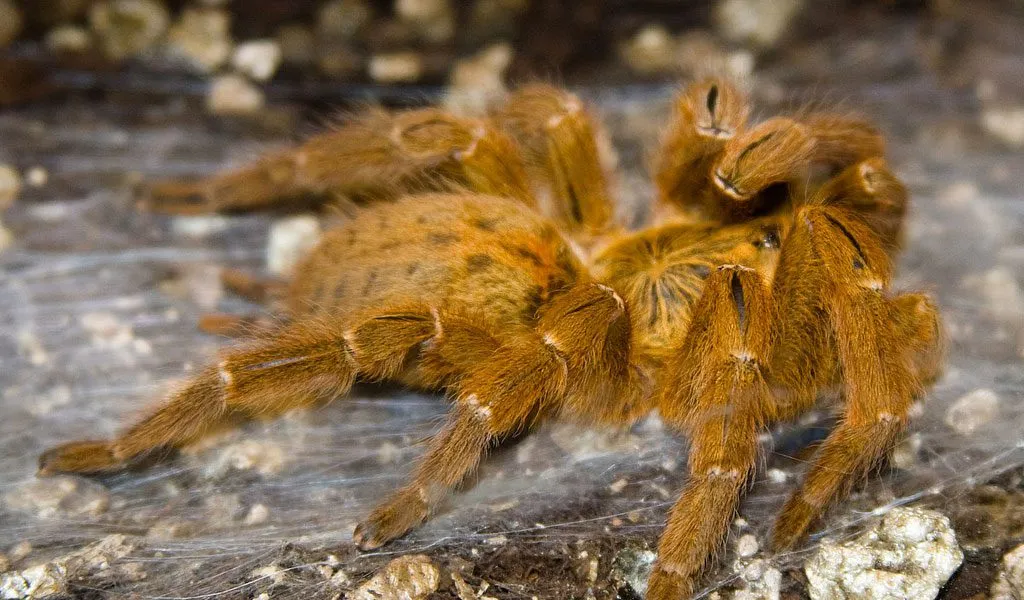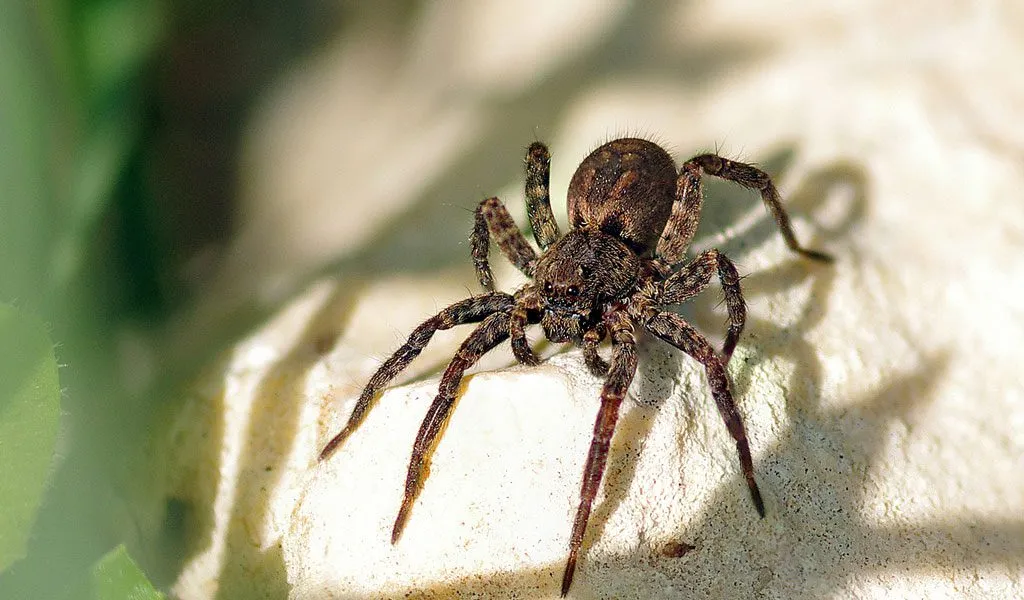What Is a Tarantula Spider
Tarantulas, members of the Theraphosidae family, are among the largest spiders in the world, known for their impressive size and often hairy appearance. These fascinating arachnids have captured the interest of both scientists and enthusiasts. They are characterized by their robust bodies, eight legs, and two body segments the cephalothorax and the abdomen. Tarantulas are found in various habitats around the globe, showcasing a remarkable diversity in their appearance and behavior. Their imposing size and distinctive features set them apart, making them a captivating subject of study and admiration. These spiders have evolved over millions of years, adapting to diverse environments and developing unique survival strategies.
Brief Overview of Tarantula Species
There are over 900 recognized species of tarantulas, each with unique characteristics. They range in size from a few inches to over a foot in leg span. The coloration of tarantulas varies significantly, from the vibrant blues and oranges of some New World species to the more subdued browns and blacks of others. Some species have urticating hairs, which they can flick at potential predators, causing irritation. Others have potent venom to subdue their prey. Their diverse adaptations and survival strategies make them a remarkable group of animals to study. The variations in size, color, habitat, and behavior underscore the adaptability of tarantulas across different environments.
Origin of the Name Tarantula

The name “tarantula” has a fascinating history, linked to a specific region in Italy and a historical misunderstanding. The story of the tarantula’s name is intertwined with the cultural and historical context in which these spiders were first studied and described. The name offers insight into how early naturalists and scientists viewed and categorized these remarkable creatures. While the origin of the name is somewhat complex, its roots are firmly planted in the traditions and beliefs of the past.
The City of Taranto
The word “tarantula” is believed to have originated from the city of Taranto, located in the Apulia region of Italy. In the 14th and 17th centuries, a medical condition known as tarantism, characterized by excessive dancing and hysteria, was prevalent in this area. The connection between the city and the spider is crucial to understanding the name’s origin. The social and environmental conditions contributed to the spread of tarantism, which was then linked to the local spiders. The historical backdrop is essential to fully understand how these spiders were named and the cultural interpretations of the time.
The Taranto Spider
The spider species associated with tarantism was likely not the large, hairy tarantulas we know today. Instead, it was probably the Lycosa tarantula, a wolf spider species common in the region. The symptoms of tarantism were thought to be caused by the bite of this spider, although this theory has been widely debunked. The association with the Taranto wolf spider demonstrates how local folklore and the prevalence of a condition influenced the naming of spiders. The historical context of the region reveals how the spider became part of the local culture. The misidentification of the wolf spider as the cause of tarantism highlights the importance of scientific accuracy.
Fascinating Fact 1: Size and Appearance

Tarantulas are among the largest spiders, with some species boasting leg spans exceeding 10 inches. Their appearance is quite striking, with a hairy body and a variety of colors, from earthy browns to vibrant blues and oranges. The size and visual appeal of tarantulas are a significant draw for enthusiasts and researchers alike. The physical characteristics reflect adaptations to their environment and their role as predators. The varying colors and patterns provide camouflage and aid in attracting mates. Their substantial size and unique appearance make them stand out in the world of arachnids.
Physical Characteristics of Tarantulas
Tarantulas have two main body parts the cephalothorax (fused head and thorax) and the abdomen. They have eight legs, each covered in sensory hairs, and two pedipalps used for handling food and sensing their environment. The physical features are essential for understanding their behavior and survival strategies. These spiders have strong chelicerae (mouthparts) that they use to inject venom into their prey. Their bodies are protected by an exoskeleton, which they shed periodically in a process called molting. The specialized structures of tarantulas enable them to survive in different ecosystems.
Variations in Colors and Patterns
The colors and patterns of tarantulas vary widely by species, including solid colors, stripes, and intricate patterns. These variations serve multiple functions, including camouflage, attracting mates, and warning potential predators. The diversity in coloration reflects the adaptation of tarantulas to different habitats. Some species use bright colors to signal toxicity to predators, while others blend seamlessly into their surroundings. The variations enhance the survival of tarantulas in their respective environments. Coloration differences between males and females are sometimes observed, enhancing the chances of successful mating.
Fascinating Fact 2: Habitat and Distribution

Tarantulas are found on every continent except Antarctica, thriving in various habitats, including rainforests, deserts, and grasslands. Their widespread distribution is a testament to their adaptability. The diverse habitats where tarantulas live showcase their ability to thrive in different environmental conditions. The study of their habitats provides crucial insights into their behavior, diet, and survival strategies. Their broad distribution highlights their adaptability and resilience as a species. The ecological niches they occupy are as diverse as the species themselves.
Where Tarantulas Live
Tarantulas can be found in various environments, including burrows in the ground, under rocks, in tree hollows, and among dense vegetation. Their choice of habitat depends on the species and the environmental conditions. The location where they choose to live is critical to their survival, offering shelter from predators and a place to ambush prey. Some species are terrestrial, while others are arboreal, occupying trees. Each habitat type poses unique challenges and opportunities for tarantulas. Understanding the habitat preferences provides insights into their behavior and survival strategies.
Different Types of Habitats
Different species of tarantulas are adapted to specific habitats, such as tropical rainforests, arid deserts, and temperate grasslands. The varying habitats lead to a rich diversity of species. The adaptations allow them to thrive in diverse conditions. Some species are well-camouflaged to blend into their surroundings, while others have specialized behaviors for hunting and survival. Their habitats play a vital role in the evolution and distribution of tarantulas. Each habitat type presents unique challenges and opportunities for these remarkable arachnids.
Fascinating Fact 3: Diet and Feeding Habits

Tarantulas are primarily predators, feeding on insects, other arthropods, and occasionally small vertebrates. Their diet varies depending on their size and habitat. The feeding habits of tarantulas reveal their role in the ecosystem. They are ambush predators, waiting for their prey to come within striking distance. They use their venom to paralyze or kill their prey before consuming it. The diets of tarantulas reflect their adaptability. Their hunting strategies showcase their predatory skills.
What Tarantulas Eat
The diet of tarantulas can include insects, such as crickets and mealworms, as well as larger prey like small lizards, rodents, and birds. The specific food sources depend on the size of the tarantula and what is available in its habitat. Their diverse diet shows that these spiders are adaptable hunters. Juvenile tarantulas tend to eat smaller prey, gradually increasing in size as they grow. Larger tarantulas may be able to consume prey much larger than themselves. Nutritional requirements influence the type and quantity of food they need.
How They Hunt and Consume Prey
Tarantulas are typically ambush predators, waiting patiently for prey to come within striking distance. They use their fangs to inject venom, which paralyzes or kills their prey. Once the prey is subdued, tarantulas use enzymes to liquefy the insides of their prey, consuming the resulting nutrient-rich liquid. Their hunting techniques highlight their predatory nature and adaptations. Their efficient feeding strategies support their growth and survival. The process of injecting venom and digesting prey is a fascinating example of adaptation.
Fascinating Fact 4: Lifespan and Growth

Tarantulas have relatively long lifespans, with females often living for several years, even decades, while males typically live shorter lives. The lifespan of a tarantula is influenced by various factors, including species, diet, and environmental conditions. The longevity of tarantulas makes them a unique subject of study. Their growth process involves molting, shedding their exoskeleton to grow larger. The molting process is a vulnerable time for tarantulas, as they are more susceptible to predators. The lifespan is an important aspect of understanding their evolution and behavior.
Tarantula Life Cycle
Tarantulas go through a life cycle that includes egg laying, hatching, and multiple molts as they grow. The life cycle varies depending on the species and environmental conditions. They start as eggs, then develop into spiderlings. The spiderlings go through several molts. The process allows the tarantula to grow larger. The complete life cycle of a tarantula is a fascinating process. The life cycle highlights their adaptability and survival strategies.
Factors Influencing Lifespan
Several factors can influence a tarantula’s lifespan, including diet, habitat, and the presence of predators. Females typically live longer than males because of differences in their reproductive roles. Diet affects growth, and access to water is crucial. Proper care in captivity can significantly extend a tarantula’s lifespan. The environmental factors are important for understanding the life cycle. The study of lifespan also gives insights into the adaptations and overall health of tarantulas.
Fascinating Fact 5: Behavior and Temperament

Tarantulas exhibit a range of behaviors, from defensive postures to elaborate mating rituals. Their temperament varies by species, with some being more docile than others. Their behaviors are essential for understanding their interactions with their environment. Understanding the behavior of tarantulas helps in their conservation. These behaviors are essential for their survival. Their behavior is influenced by various environmental factors, and understanding their temperament helps researchers.
Common Tarantula Behaviors
Common tarantula behaviors include digging burrows, creating webs, and displaying defensive postures when threatened. They also engage in complex mating rituals involving courtship dances and the transfer of sperm. Their behavior is often related to their survival and reproduction. The behaviors of tarantulas are fascinating to observe. The study of their behavior provides insights into their adaptations. These behaviors reflect how they interact with their environment.
Interactions with Humans
Tarantulas can be kept as pets, but it’s essential to understand their needs and potential risks. They are generally not aggressive but can bite if provoked. Their venom is not typically life-threatening to humans, but can be painful. Safe handling practices and responsible pet ownership are crucial. Educating people about tarantulas helps to reduce fear and misunderstandings. Responsible pet ownership provides a safe environment. Interactions with humans also influence tarantula conservation.
Conclusion

Tarantulas are remarkable creatures with fascinating histories, unique adaptations, and diverse behaviors. From the origin of their name to their varied habitats and feeding habits, tarantulas continue to intrigue and captivate. Their long lifespans, complex behaviors, and role in their ecosystems make them essential subjects for scientific research and conservation efforts. The study of tarantulas offers valuable insights into the natural world. Continued research is crucial for understanding their evolutionary history and their place in biodiversity. Learning about these amazing spiders enhances our appreciation for the diversity of life on Earth.
